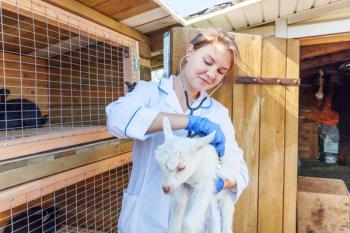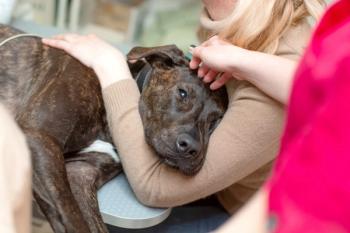
Does Laser Therapy Help Surgical Wounds Heal Faster?
A recent study showed that laser therapy, while increasingly popular in veterinary medicine, offers mixed results.
Low-level laser therapy (LLLT) is commonly used as a treatment adjunct in human and veterinary medicine for wound healing and control of inflammation. Study results on the effectiveness of this therapy have been mixed.
RELATED:
- Laser Therapy Expanding in General Veterinary Practice
- Using Rehabilitation Therapies for Pain Management
Researchers at the University of Tennessee College of Veterinary Medicine
Study Design
Ten healthy, intact female dogs with no known history of health problems were obtained from a local humane society. While performing bilateral flank ovariectomy on each dog, researchers also created a small open wound with a 15-mm punch biopsy 3 cm caudoventral to each spay incision. Incisions and wounds were covered with sterile nonadherent bandages for 3 days. All dogs received nonsteroidal anti-inflammatory therapy after surgery and wore Elizabethan collars throughout the study.
After consulting the American College of Veterinary Sports Medicine and Rehabilitation, researchers designed LLLT treatment as follows:
- Treatment was performed every 24 hours from days 1 through 5 postoperatively.
- A 980-mm laser with an energy density of 5 J/cm2 and a power of 2 to 3.5 watts was used.
- The noncontact laser head was held 1 cm away from the skin.
- The treatment area measured 5.08 cm by either 5.08, 7.62, or 10.12 cm.
For each dog, one flank received LLLT treatment while the other flank served as a control. Researchers evaluated postoperative healing on days 3, 7, 11, and 14 using a standardized form with sections for inflammation, heat, erythema, and swelling; wounds were measured to calculate wound area. A blinded observer also viewed photographs to compare healing between sides at different time points. On days 7 and 14, dogs were sedated to obtain 4-mm biopsies from each incision for histologic evaluation of epithelialization, necrosis, fibrosis, and inflammation.
Results
The 10 dogs were mixed breeds with a mean age of 10.5 months and mean weight of 11.2 kg. One dog was removed from the study 10 days after surgery for testing parvovirus-positive; however, all 10 dogs recovered well postoperatively and were adopted after the study.
Regardless of treatment, all open wounds created via punch biopsy were clinically healed by day 14 and had healthy granulation tissue and epithelialization by day 11. Likewise, all incisions were healed and sutures were removed by day 14. Aside from less necrosis and perivascular lymphocytes in the treated group than in the control group on day 7, no other histologic differences were observed at the incision sites between groups. Also, the blinded observer noted healing at more time points for open wounds in the treated vs control group.
Take-home Message
Overall, the use of LLLT for surgical incisions and surgically created wounds did not significantly affect healing time, wound size, or histologic findings. The authors emphasized that no standardized LLLT protocol exists for wound healing in veterinary medicine, underscoring the need for continued research in this area.
Dr. Stilwell received her DVM from Auburn University, followed by a MS in fisheries and aquatic sciences and a PhD in veterinary medical sciences from the University of Florida. She provides freelance medical writing and aquatic veterinary consulting services through her business, Seastar Communications and Consulting.
Newsletter
From exam room tips to practice management insights, get trusted veterinary news delivered straight to your inbox—subscribe to dvm360.




